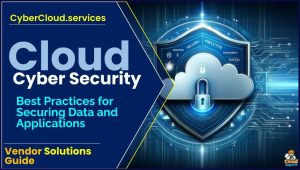Best Practices
What is CSPM (Cloud Security Posture Management)?
Cloud security posture management is crucial for organizations to maintain a secure environment in the cloud.
 Cloud security posture management (CSPM) consists of offerings that continuously manage IaaS and PaaS security posture through prevention, detection and response to cloud infrastructure risks.
Cloud security posture management (CSPM) consists of offerings that continuously manage IaaS and PaaS security posture through prevention, detection and response to cloud infrastructure risks.
The core of CSPM applies common frameworks, regulatory requirements and enterprise policies to proactively and reactively discover and assess risk/trust of cloud services configuration and security settings.
Cloud security posture management is crucial for organizations to maintain a secure environment in the cloud. By following best practices, you can ensure the safety of your data and applications.
- Continuous Monitoring: Implement continuous monitoring of your cloud environment to detect any security issues in real-time. This helps in identifying and addressing potential threats promptly.
- Compliance Management: Ensure that your cloud security posture aligns with industry regulations and standards. Regularly audit your security controls to maintain compliance with relevant laws and guidelines.
- Access Control: Implement strict access control measures to limit who can access your cloud resources. Use multi-factor authentication and least privilege principles to reduce the risk of unauthorized access.
- Data Encryption: Encrypt your data both at rest and in transit to protect it from unauthorized access. Utilize strong encryption algorithms and key management practices to safeguard sensitive information.
- Incident Response Plan: Develop a comprehensive incident response plan that outlines steps to take in case of a security breach. Test the plan regularly to ensure its effectiveness in mitigating security incidents.
- Security Automation: Utilize automation tools to streamline security processes and reduce human errors. Implement security automation for tasks such as vulnerability scanning, patch management, and security policy enforcement.
- Employee Training: Provide regular security training to employees to raise awareness about cloud security best practices. Educate staff on how to recognize and report security threats to prevent data breaches.
- Cloud Provider Evaluation: Thoroughly assess the security measures of your cloud service provider before migrating your data and applications. Choose a provider that prioritizes security and offers robust security features.
- Security Testing: Conduct regular security testing, including penetration testing and vulnerability assessments, to identify and remediate security weaknesses in your cloud environment. Test your security controls to ensure their effectiveness.
- Incident Response Drills: Perform regular incident response drills to simulate security incidents and test the effectiveness of your response plan. Evaluate the outcomes of the drills to improve your incident response capabilities.



